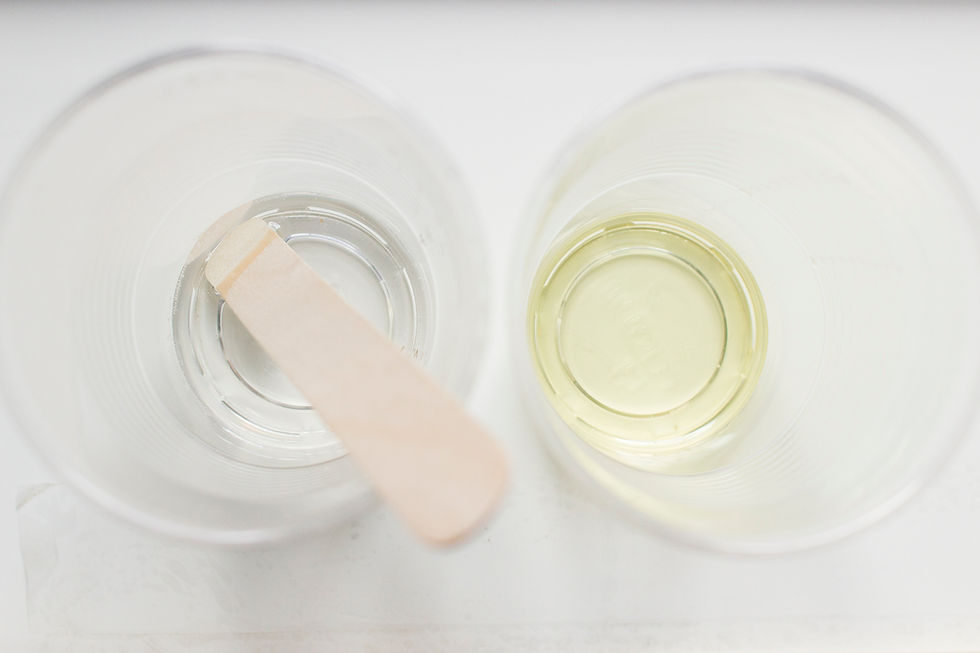Health and Safety - Epoxy Resins in Canoebuilding
- Fritz

- Sep 26, 2021
- 3 min read
Anyone working with epoxy resins should urgently consider health and safety issues beforehand. This article is not a comprehensive guide to the processing of epoxy resins and reflects our experience with epoxy resins in the specific context of canoebuilding. If in doubt, always refer to the warnings and processing instructions printed on the products. Before using such products, read the safety data sheet carefully.
What are epoxy resins?
Epoxy resins usually consist of two components, the resin and the hardener, which are mixed in a specific ratio immediately before processing and then cure by a chemical process. Depending on the hardener used, the epoxy has different curing times ranging from a few minutes to hours. The mixing ratio must be precisely adhered to, otherwise parts of the components cannot cure in the chemical reaction because they lack the "counterpart". Pretty much all resin systems are hazardous to your health if you do not protect yourself adequately. Our following tips apply primarily to canoe construction, where epoxy resins are used for smaller joints but also very large-area lamination. The potential danger is higher with work on large areas, of course.

Inhalation
Liquid components of the resin will outgas and can be inhaled. This applies both to the individual components and to the mixed resin. You should protect yourself with a gas mask with suitable filters. The type of filter depends on the resin system used and should be specified in the safety data sheet. If you are laminating large surfaces, for example the hull of a strip canoe, the resin will outgas even more due to the large surface area. Always use the gas filters only as long as specified by the manufacturer and be sure to replace them as soon as you smell something through them (through fresh filters you should not even smell solvents). Also ensure sufficient ventilation, preferably with fly screens, as insects are magically attracted and unfortunately often stick to the fresh resin.
Splashes
When processing epoxy resin, you often work against time. Especially when laminating large-area canoe hulls, you have to work quickly and should therefore protect your eyes from resin splashes with safety goggles.
Skin contact
Just as important as protection against inhalation is protection against skin contact. The resin components have a sensitizing effect, so contact allergies can develop over time. As already described above, you often work against the clock and want to laminate your elaborately built canoe hull in the best possible way. It is the hands that are most likely to come into contact with the epoxy resin. Vinyl and latex gloves are unsuitable for working with epoxy, you need nitrile gloves for single use. However, even these are penetrated by the resin on a chemical level after a few minutes, even if they are still visually intact. There is a risk of allergic reactions here. Therefore, replace nitrile gloves with new ones whenever possible. Insiders tip: wear cotton gloves under the nitrile gloves ... they act as a spacer.
There is a risk of skin contact not only on the hands, but especially on the forearms and all other parts of the body. We recommend wearing a long-sleeved T-shirt and long pants to cover all skin areas. In addition, a suitable overall should be worn to protect against the chemicals. Closed shoes are mandatory.
Another danger is posed by uncured individual components of the resin that have been spilled during mixing and can contaminate table surfaces and tools. These components can continue to endanger you for a long time if you touch contaminated parts, since unmixed resin components cannot cure. Therefore, keep your workstation where you weigh and mix the resin as tidy as possible. Leave only things you need there and cover surfaces carefully. Place plastic wrap over your scale to keep it clean. Provide a trash can with a trash bag where you can immediately dispose of used mixing cups, stirring sticks, brushes and gloves.
As you can see, working with epoxy in canoe building is not without its risks and you should think about how you can work safely in your workshop in order to protect yourself and others.




Comments